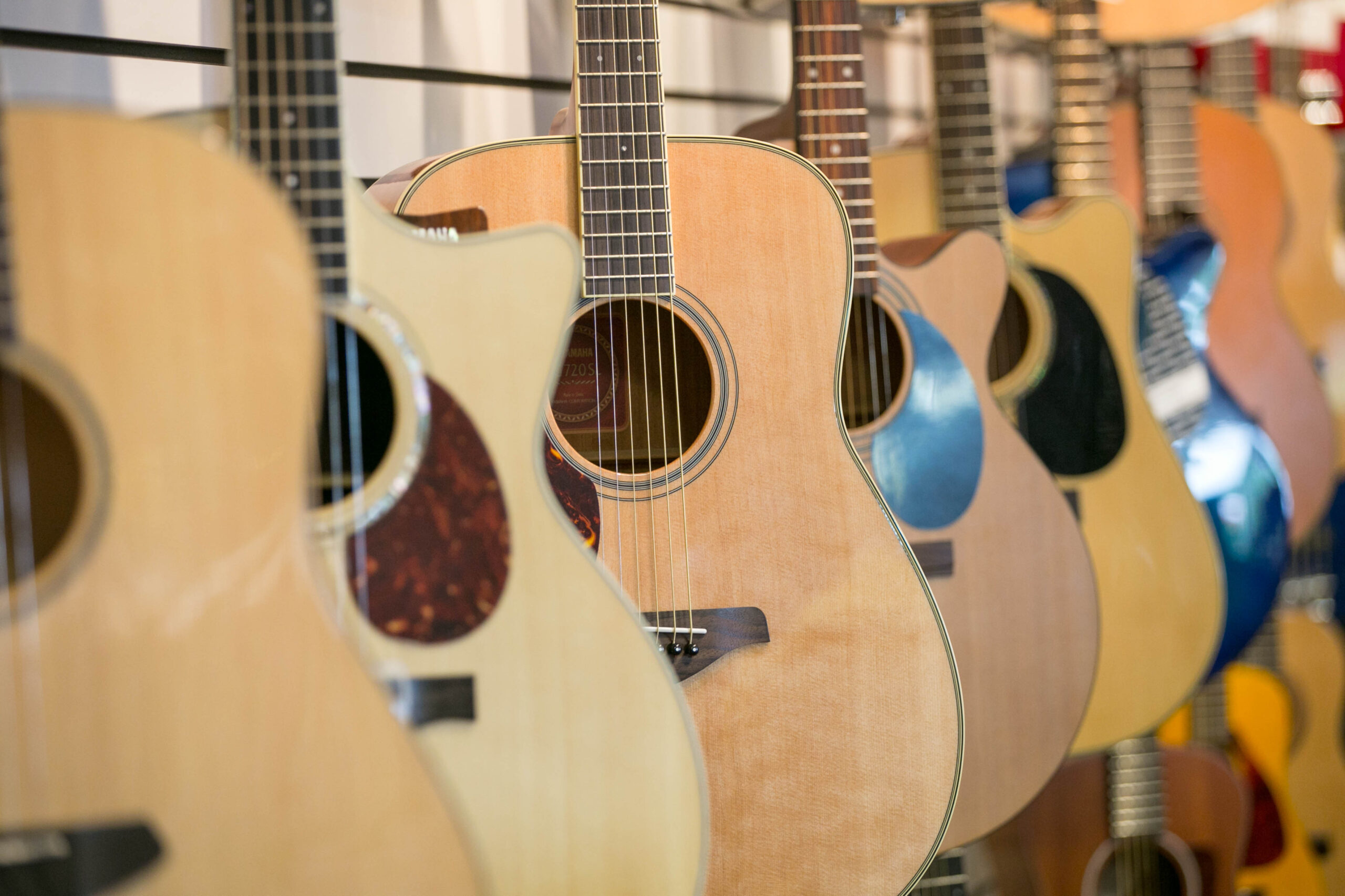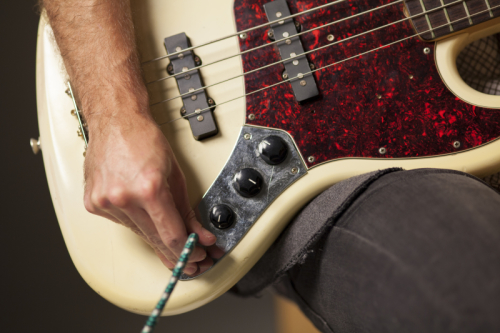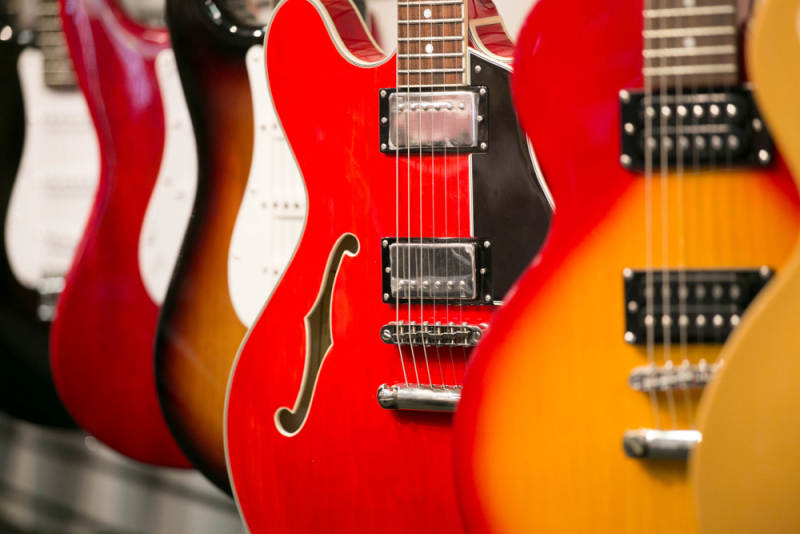April 09, 2015
What is a Mandolin Guitar?
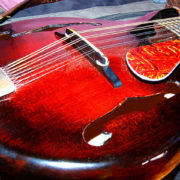

If you’ve ever seen a country music band perform live, you might have noticed someone playing what looks like a small guitar. That instrument is, in fact, a mandolin. The mandolin is a musical instrument in the lute family. It generally has four courses of doubled metal strings, for a total of eight strings, that are tuned in unison. While there are many styles of mandolin, only three are common: the round-backed mandolin, the carved-top mandolin, and the flat-backed mandolin.
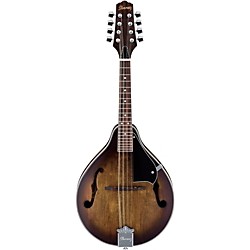

The round-back has a deep bottom while the carved-top has a much shallower, arched back and top. The flat-backed mandolin is constructed similarly to an acoustic guitar. Each type of mandolin has a unique sound and each is associated with a certain type of music. Carved-top mandolins can be found mostly in folk and bluegrass music, while flat-backed instruments are used in British, Irish, and Brazilian folk music. Round-backed mandolins can be heard primarily in European classical music. As you can see, the mandolin has been adopted throughout a variety of different genres and cultures. This is due to the fact that it’s actually a very old instrument.
History of the Mandolin
An instrument that can be considered a precursor to the mandolin first appeared as early as 2000 BC in Mesopotamia. While these early instruments had some structural differences, they were similar in structure to the mandolin. Over the course of the next several millennia, this instrument would go by many names, before eventually being called the lute. This instrument traveled throughout Europe and the Middle East. In a 14th century painting, a miniature lute is depicted being played by an angel. This instrument is called the mandora, by the Latins. The Italians, on the other hand, called this instrument the mandola. A smaller version of the mandola was called the mandolina.
When European immigrants started coming to North America in the 19th century, they brought the mandolin with them. Because of an interest in foreign or exotic things, the mandolin became a popular instrument. Along with the ukulele, the mandolin was popular during the 1850’s as a novelty which amused the middle class. In the late 19th century, there was an increase in Italian immigration which further popularized a version of the mandolin. The mandolin would remain popular well into the 20th century, and at one point factories were mass producing them.
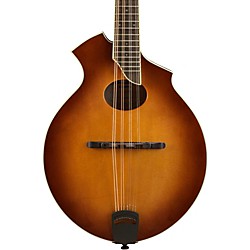

In the 1940’s, the mandolin, along with the banjo and guitar, had become popular with middle-class youths on college campuses in the American south. During this time, players were more experimental in how they used the instrument. New playing styles emerged as a result of this experimentation, some of which were influenced by techniques that are more closely associated with the guitar. This would eventually lead to the mandolin’s prominence in American folk and country music, where it was a staple throughout the 60’s and 70’s. Popular musicians and bands such as Rod Stewart or Led Zeppelin have also incorporated the mandolin into their music. While the mandolin may not be as popular as the guitar, it is still an important part of many musicians’ sound.
Differences Between the Mandolin and Other Instruments
Because of the mandolin’s appearance, it’s often compared to the guitar or the ukulele. While there are many similarities between these instruments, there are also many important differences. When compared with the ukulele, the main differences are the number of strings, the shape of the instruments’ bodies, the types, the sounds each instrument produces, the genres that each is associated with, and the history. Mandolins have eight strings, while ukuleles generally only have four. Mandolins are commonly played with a pick, while ukuleles are most often strummed. It’s also true that, despite these conventions, both instruments can be strummed and picked.


The ukulele’s body comes in a traditional figure 8 shape, but can be made in a variety of unconventional shapes, such as the pineapple ukulele and cigar box ukulele. The mandolin is made of three main body types. When it comes to the genres each instrument is associated with, the mandolin is generally found in bluegrass and classical music while the ukulele is found in Hawaiian and folk music. The history is one area where the two instruments really show their differences. The mandolin is a derivation of an incredibly old instrument, the lute. While the ukulele is considered to be in the lute family, it was developed as recently as the 19th century as a Hawaiian interpretation of a small guitar-like instrument brought to the Hawaiian Islands by Portuguese immigrants. These differences demonstrate that, despite having a similar appearance, the mandolin and the ukulele are two very distinct instruments.
Another instrument that the mandolin is commonly compared to is the acoustic guitar. Because of their popularity and diversity, guitars can come in any number of different shapes, sizes, materials, etc. The main differentiator between the mandolin and the guitar, aside from the mandolin’s much smaller size, is the sound that each instrument produces. Because mandolins are much shorter than guitars, the strings on a mandolin make higher pitched notes. Each of the mandolins four pairs of strings is tuned to a different note, while the six strings on a guitar are all tuned to a different note. The double strings on a mandolin cause the notes to ring longer because they vibrate together. Mandolins are tuned like violins, from low to high: GDAE. The guitar, on the other hand, is tuned: EADGBE. For this reason, those who already play guitar find that it can be a little odd at first to get used to playing the mandolin. Once they get over the differences, however, many often report that they find playing the mandolin to be a lot of fun.
Ready to Learn to Play the Mandolin?
Whether you’re a guitar player looking to branch out into a new instrument, or are a beginner that has never learned to play an instrument before, the mandolin is an excellent choice. With a unique sound and a rich history, you won’t regret learning to play the mandolin. For a great selection of mandolins, head over to Music & Arts.
photo via Don Sampson, cc




